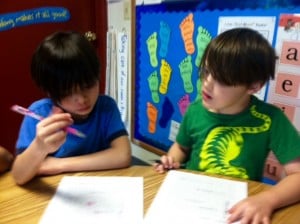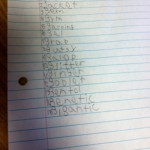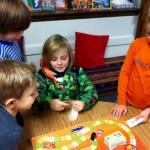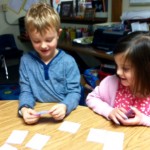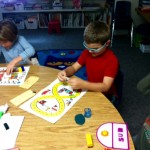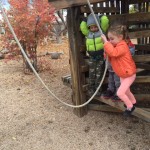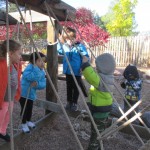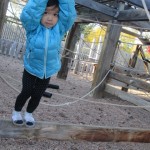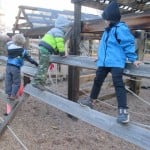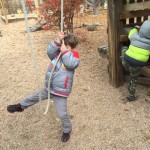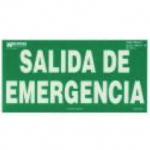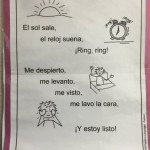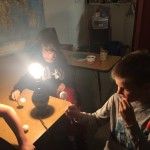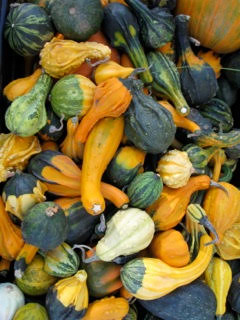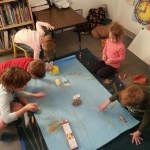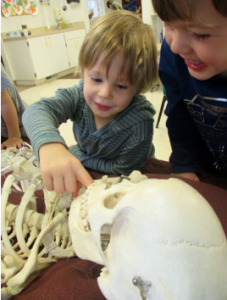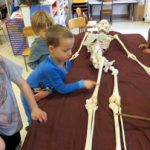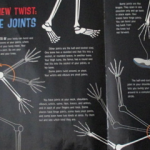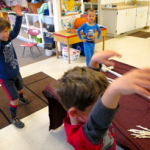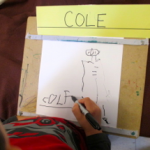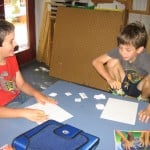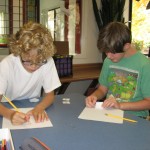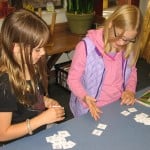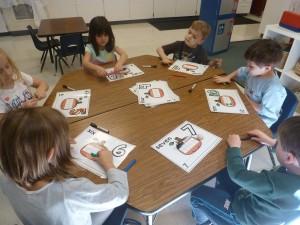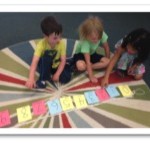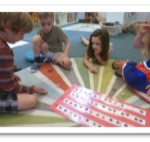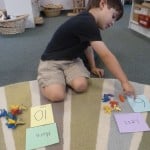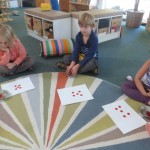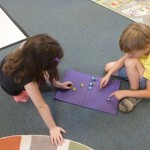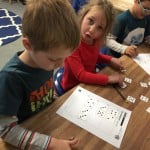 “Students solve problems not to apply mathematics but to learn new mathematics,” according to John Van de Walle in his book, Teaching Student Centered Mathematics. Giving students a problem and having them figure out how to solve it and then discussing their techniques is a primary method of math instruction at Bixby. In using what they know to figure out how to solve a new problem, they are constructing their own understanding of the concepts and connecting that understanding to their experiences.
“Students solve problems not to apply mathematics but to learn new mathematics,” according to John Van de Walle in his book, Teaching Student Centered Mathematics. Giving students a problem and having them figure out how to solve it and then discussing their techniques is a primary method of math instruction at Bixby. In using what they know to figure out how to solve a new problem, they are constructing their own understanding of the concepts and connecting that understanding to their experiences.
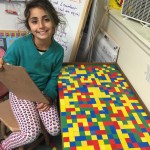 Over the past couple of weeks, 2nd and 3rd graders have been solving perimeter and area problems. Problems began at a basic level and built from there. At one point, students found multiple ways to make rectangular puppy pens given a certain amount of fencing. Students noticed that some pens would give the puppy more space than others. This led students to a study of area. As a part of the study, students figured out all the ways to make a rectangle with 36 one-inch tiles. When analyzing the results, they noticed that when a 1” x 36” rectangle was made, three sides of the end tiles were exposed and two sides of all the other tiles were exposed resulting a long perimeter, but when the tiles where organized in many rows, some tiles were not exposed resulting in a shorter perimeter. As students studied area, they began to organize their count noting that they were covering rectangles with equal rows of tiles. Some knew about multiplication and discovered that the length and width could be multiplied to find an area. Those that do not have a background in multiplication yet found other efficient ways to solve area problems. This background in area was a great jumping off point for a study of multiplication. This week, we have been translating repeated addition situations to multiplication equations. We will be continuing our introduction to multiplication next week. I will discuss my approach to teaching multiplication in my next blog on November 20.
Over the past couple of weeks, 2nd and 3rd graders have been solving perimeter and area problems. Problems began at a basic level and built from there. At one point, students found multiple ways to make rectangular puppy pens given a certain amount of fencing. Students noticed that some pens would give the puppy more space than others. This led students to a study of area. As a part of the study, students figured out all the ways to make a rectangle with 36 one-inch tiles. When analyzing the results, they noticed that when a 1” x 36” rectangle was made, three sides of the end tiles were exposed and two sides of all the other tiles were exposed resulting a long perimeter, but when the tiles where organized in many rows, some tiles were not exposed resulting in a shorter perimeter. As students studied area, they began to organize their count noting that they were covering rectangles with equal rows of tiles. Some knew about multiplication and discovered that the length and width could be multiplied to find an area. Those that do not have a background in multiplication yet found other efficient ways to solve area problems. This background in area was a great jumping off point for a study of multiplication. This week, we have been translating repeated addition situations to multiplication equations. We will be continuing our introduction to multiplication next week. I will discuss my approach to teaching multiplication in my next blog on November 20.
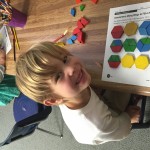 First graders also use problem solving as a way to learn new concepts. For the past few weeks, they focused on geometry concepts often using puzzles and games to learn more about the characteristics of different shapes. This week, they have been using problem solving to identify new understanding of number concepts. Specifically, they have been solving pairs of problems to identify that numbers can be added in any order. They have also been solving problems in which they find many combinations that make a given number. As they share techniques, students find more efficient ways to solve these types of problems. Next week, first graders will focus on subtraction.
First graders also use problem solving as a way to learn new concepts. For the past few weeks, they focused on geometry concepts often using puzzles and games to learn more about the characteristics of different shapes. This week, they have been using problem solving to identify new understanding of number concepts. Specifically, they have been solving pairs of problems to identify that numbers can be added in any order. They have also been solving problems in which they find many combinations that make a given number. As they share techniques, students find more efficient ways to solve these types of problems. Next week, first graders will focus on subtraction.

